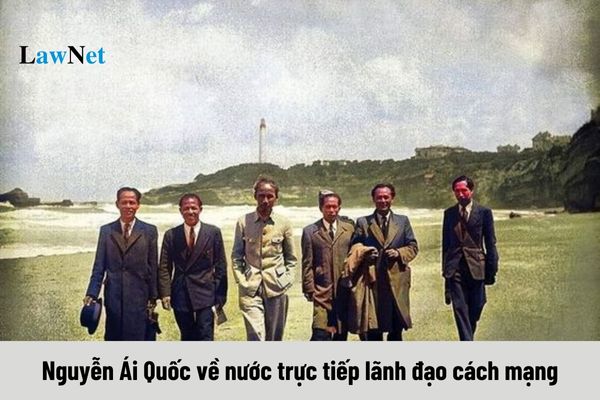When did Nguyen Ai Quoc return to lead the revolution in Vietnam? What are perspectives on developing the curriculum for History at lower secondary level in Vietnam?
When did Nguyen Ai Quoc return to lead the revolution in Vietnam?
| Leader Nguyen Ai Quoc chose to return to his homeland at a time when both domestic and global situations were experiencing strong changes. After the Government of France surrendered to Nazi Germany in June 1940, he assessed this as a “favorable opportunity for the Vietnamese revolution” and emphasized that returning was necessary. The national liberation struggle within the country was developing strongly, especially after Japan entered Indochina, prompting the people to rise with several uprisings, such as the Bac Son and Nam Ky uprisings. However, the revolutionary movement was brutally repressed by the French colonialists, leading the Communist Party to establish an interim Central Committee at the Central Conference in November 1940. In this urgent situation, the Communist Party needed to strengthen its organizational system to lead the movement. Comrade Hoang Van Thu was assigned the task of meeting Nguyen Ai Quoc. In December 1940, at Tinh Tay, Hoang Van Thu reported to him about the preparations for the 8th Central Conference and the organization of political training classes for patriotic youths. When returning to the homeland, he crossed milestone 108 (milestone 675) and reached Pac Bo, Cao Bang. This was an ideal location to establish a revolutionary base, thanks to its convenient position and local movement. He stayed at Mr. Ly Quoc Sung's house and later moved to Coc Bo Cave to live and work, demonstrating strategic vision and sensitivity in foreseeing the future of the Vietnamese revolution. |
Note: Information is for reference purposes.

When did Nguyen Ai Quoc return to lead the revolution in Vietnam? (Image from the Internet)
What are perspectives on developing the curriculum for History at lower secondary level in Vietnam?
According to the general education program in History issued with Circular No. 32/2018/TT-BGDDT, the perspectives on developing the curriculum for History at lower secondary level are as follows:
- The program aims to form and develop scientific thinking in students, viewing the world as an entity in terms of both space and time, based on fundamental knowledge, learning, and research tools in history and geography; thereby, forming and developing specific and general competencies, especially the ability to apply knowledge and skills in practice and creativity.
- The program inherits and promotes the advantages of the subjects History and Geography in the current general education program and learns from the experience of curriculum development in advanced countries worldwide. The content of the subject ensures equipping students with a foundational, comprehensive, and scientific general knowledge; suitable to the psychological and cognitive levels of students, considering the teaching conditions of Vietnamese schools.
- The historical education content is designed in a linear timeline, from the prehistoric period through ancient, medieval to modern times; within each period interweaving world history, regional history, and Vietnamese history. The Geography content moves from general geography to regional geography and Vietnamese geography. It focuses on selecting topics, connecting knowledge and skills to form and develop competencies in students, while placing importance on the scientific characteristics of history and geography.
- The program emphasizes applying positive educational methods, stressing the use of teaching aids, diversifying teaching forms, and assessing educational outcomes to form and develop qualities and competencies in students.
- The program ensures connectivity with the primary school History and Geography curriculums and the upper secondary History and Geography curriculums; maintaining consistency and close connection between classes, levels, subjects, and educational activities of the general education program.
- The program is open, allowing for flexible implementation depending on the local conditions and student target groups (students in difficult areas, students with special support needs, etc.).
What are the objectives of the curriculum for History at lower secondary level in Vietnam?
According to the general education program in Literature issued with Circular No. 32/2018/TT-BGDDT, the objectives of the curriculum for History at lower secondary level in Vietnam are as follows:
- The History subject at the lower secondary level contributes, along with other subjects and educational activities, to forming and developing key qualities and general competencies in students.
- The History subject at the lower secondary level forms and develops in students the competencies of history and geography on the foundation of basic, selected knowledge about the world's, national, and local history, geography; natural, socio-economic processes and cultural events occurring in space and time; and the interaction between human society and the natural environment.
- It helps students learn how to use the tools from historical science and geographical science for study and practical application.
- Concurrently, it contributes, alongside other subjects and educational activities, to forming and developing key qualities, and general competencies in students, particularly the love for homeland and country, pride in national traditions, respect for the diversity of world history and human culture, inspiring students to explore the surrounding world and apply what they have learned to reality.

